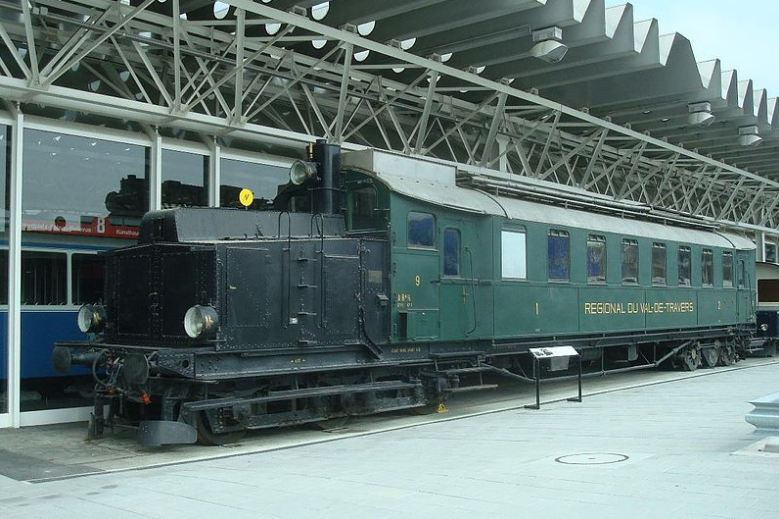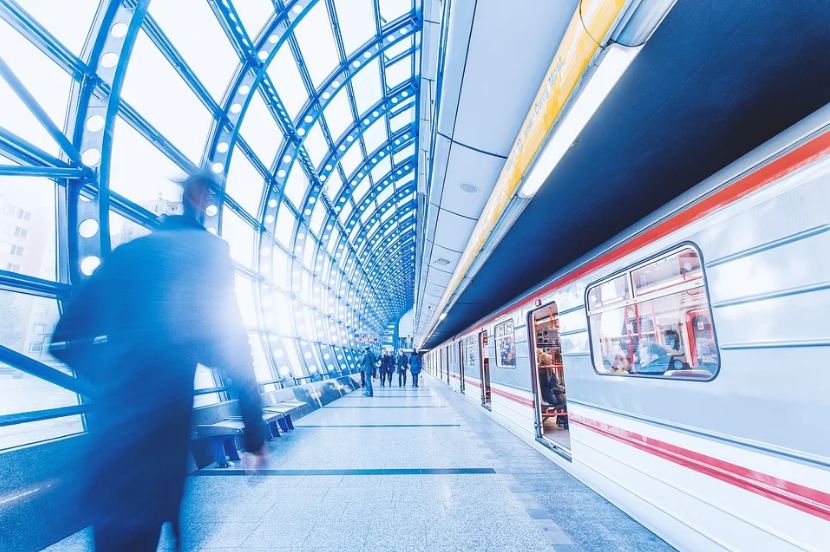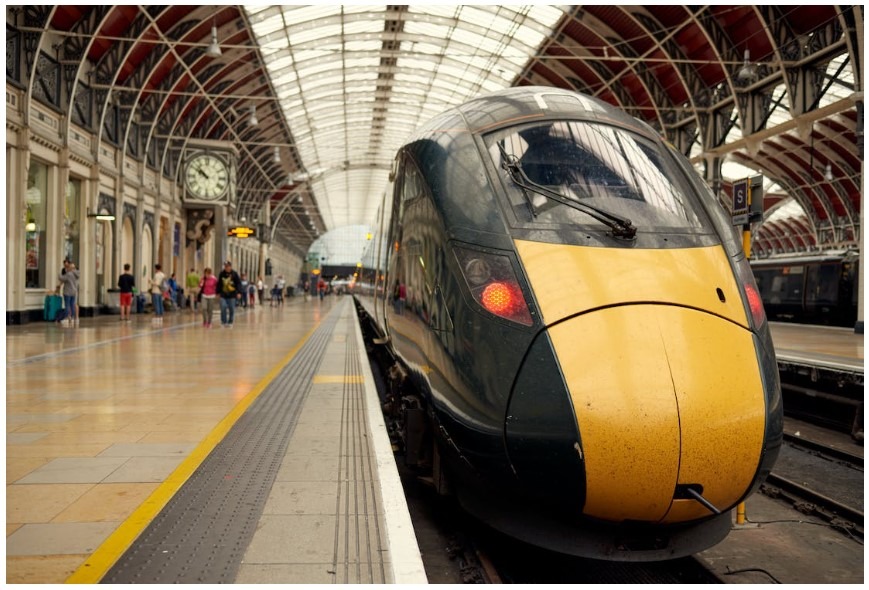What Are Train Graveyards and Where Are They Found?
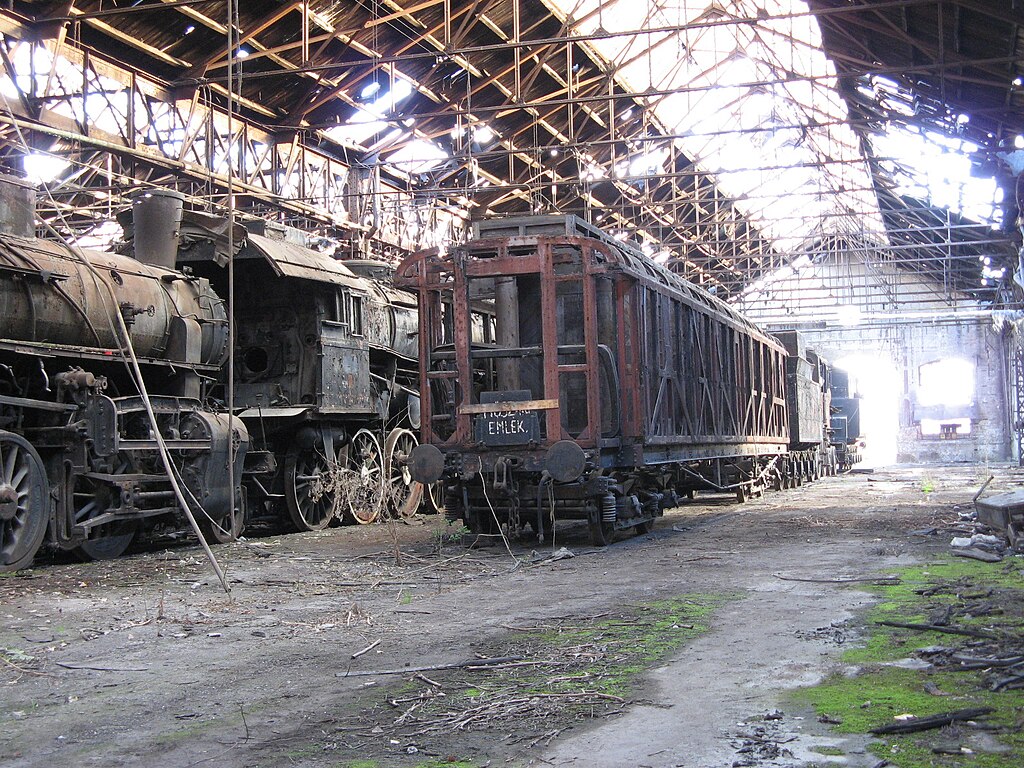
Train graveyards are vast outdoor collections where abandoned locomotives and railcars rest in their final stages of decay. You'll find these historic sites scattered across Europe, North America, and South America, with notable locations including Budapest's Istvántelek Train Yard, Bolivia's Uyuni cemetery, and countless hidden spots throughout the American Midwest. These rusting giants tell fascinating stories of railway's golden age, and each site holds unique secrets waiting to be unearthed.
Image: Christo, Budapest, Istvántelki Főműhely, vonattemető, 4, CC BY-SA 4.0
The Rise and Fall of Railway Networks
As the industrial revolution altered the global terrain, railway networks emerged as the arteries of progress, connecting cities, industries, and communities across vast distances.
You'll find that train systems became the backbone of economic growth during the 19th and early 20th centuries, transforming remote locations into vibrant transportation hubs and enabling unprecedented resource extraction.
The Baltimore and Ohio Railroad marked a pivotal moment in 1828 that launched America's rapid railway expansion.
However, the golden age of rail wouldn't last forever. As automobiles gained popularity and air travel became more accessible, many railway networks faced decline.
Economic recessions and industrial restructuring dealt additional blows to these once-mighty systems. You can trace this transformation through the 20th century, as formerly crucial rail infrastructure fell into disuse.
What were once proud symbols of industrial might gradually transformed into abandoned relics, leaving behind silent tracks and empty stations across the scene.
Notable Train Graveyards Across Europe
These abandoned railway networks left behind haunting monuments to their former glory, and nowhere is this more evident than in Europe's train graveyards. Among the most notable is Budapest's Istvántelek Train Yard, also known as the Red Star Train Graveyard, where you'll find over 100 abandoned locomotives, including pre-WWI Austro-Hungarian steam engines and Communist-era trains. Some of these trains carry a dark history, allegedly being used to transport prisoners to Auschwitz during WWII.
In Greece, the Thessaloniki Train Cemetery showcases thousands of abandoned train cars from the 1980s, slowly being reclaimed by nature.
Russia's Shumkovo cemetery features Soviet-era trains, with some units finding new life through Chinese buyers or museum restoration projects. These train graveyards serve as silent witnesses to Europe's complex railway history. While modern underwater railway projects like the Channel Tunnel connect nations across vast distances, these graveyards remind us of transportation's evolving nature.
Hidden Rail Relics in North America
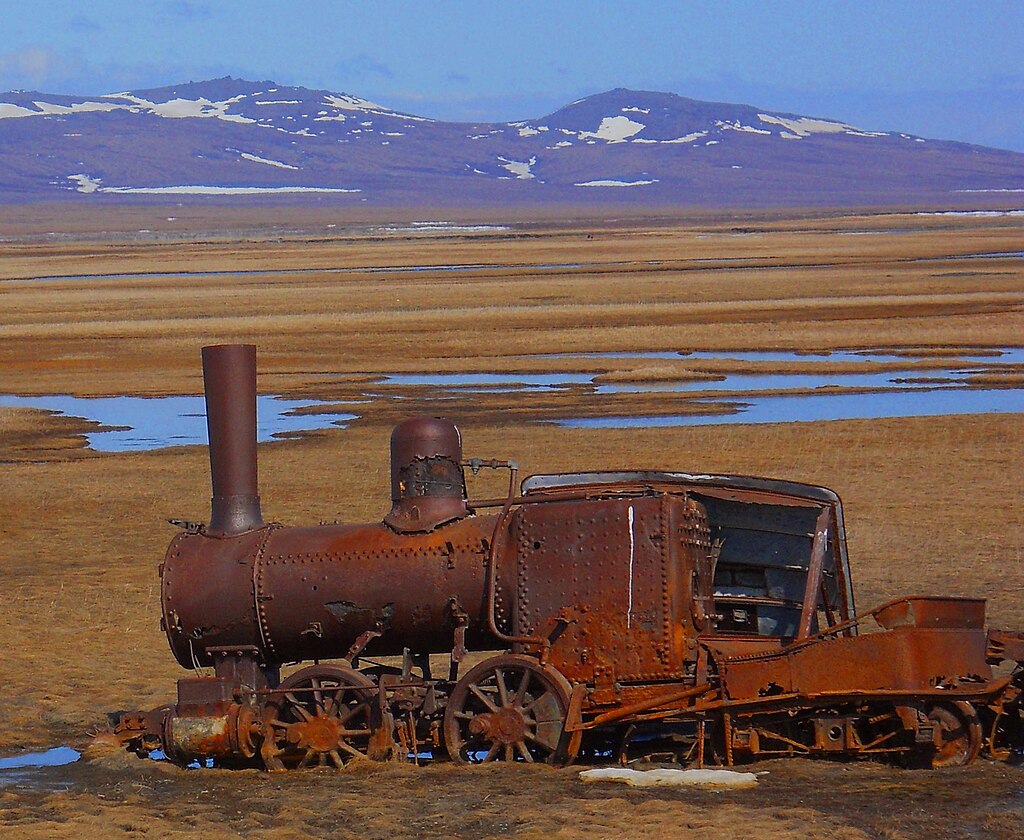
Image: Tim659, " Last Train to No-where ", CC BY-SA 3.0
North America's hidden train graveyards tell a compelling story of the continent's railway decline, with countless abandoned locomotives and rail cars scattered across remote locations. While not as extensive as Bolivia's famous Uyuni train cemetery, these sites offer unique glimpses into railroad history.You'll find remarkable collections throughout the Midwest and Northeast, from Illinois to Pennsylvania, where freight cars and passenger locomotives rest in silent testimony to bygone eras. The Southeast reveals its own treasures, including Kentucky's Morehead & Norfolk Railroad remains and Massachusetts' rail-to-trail conversions. On Vancouver Island, the E&N Railway edges closer to joining these historic relics.
The East Broad Tops Mt. Union yard in Pennsylvania stands out with its impressive array of narrow gauge equipment. These sites require careful exploration, as you'll need to traverse overgrown vegetation while documenting these industrial time capsules. Many of these locations gained historical significance following the aftermath of the Civil War era, when the rapid expansion of railroads transformed the American frontier landscape.
The High-Altitude Trains of Uyuni
While most train graveyards fade into obscurity, Bolivia's Uyuni Train Cemetery stands as a haunting monument to industrial ambition at high altitude. You'll find over 100 abandoned British trains scattered across this barren scene, their metal frames slowly corroding from the salt winds sweeping in from the nearby Salar de Uyuni.
These rusted giants tell the story of Bolivia's once-thriving mining industry and Uyuni's dream of becoming a major railway hub. Instead of being sold for scrap, the trains were left to deteriorate, creating an eerily beautiful tourist attraction.
You'll get the best experience by visiting during early morning or late evening when the crowds thin out and the lighting modifies these skeletal remains into striking photo opportunities. Though unmarked, locals can guide you to this unique site.
Preservation Efforts and Heritage Sites
As train graveyards intrigue public imagination, many have converted from rusting relics into vibrant heritage sites. You'll find these preserved locations around the world, from the Red Star Train Graveyard in Budapest to Bolivia's famous site near the Salar de Uyuni salt flats. These once-forgotten railways now serve as living museums of transportation history.
The East Broad Top Railroad in Pennsylvania offers restored locomotives and working heritage experiences. Budapest's Istvántelek Train Yard preserves over 100 communist-era trains. Bolivia's Great Train Graveyard combines industrial history with stunning natural vistas. Maine's Monson Junction showcases regional railroad heritage through preserved rolling stock. Historical preservation efforts help maintain these sites for future generations to investigate and learn from.
Photography and Urban Exploration
Train graveyards have become prime destinations for photographers and urban enthusiasts seeking unique compositions and atmospheric scenes. You'll find talented artists capturing the haunting beauty of rusted train carriages and documenting the effects of time on abandoned rolling stock. These locations offer captivating subjects for both amateur and professional photographers.
If you're interested in exploring these sites, you'll need to obtain proper permissions, as many train cars are on private property. Bring sturdy footwear and protective gear, since deteriorating structures can pose safety hazards. The best times for photography are during golden hour or on overcast days when the light is diffused.
Consider visiting during different seasons to capture varying moods - from snow-covered winter scenes to summer's wild vegetation reclaiming the abandoned equipment.
Environmental Impact and Metal Recovery

Image: Martin St-Amant , Uyuni Décembre 2007 - Cimetière de Trains 1, CC BY 3.0
Beyond their photographic appeal, these industrial sites present serious environmental challenges that demand attention. You'll find that train graveyards pose significant risks through hazardous material leaching, contaminating soil and groundwater with heavy metals and toxic substances. However, the mining industry has found importance in these sites through scrap metal recovery operations, particularly targeting copper and aluminum components.Asbestos, lead, and PCBs from abandoned trains create health hazards. Toxic materials can seep into surrounding ecosystems and water supplies. Professional recycling companies extract useful metals for profit. Improper handling during recovery can worsen environmental damage. Some locations have been successfully converted into eco-friendly attractions.
While metal recycling efforts help reduce environmental impact, it's essential to manage these operations carefully to prevent further contamination of these industrial remnants.
Historical Significance and Cultural Value
While their rusted exteriors may appear lifeless, train graveyards serve as powerful monuments to transportation history and cultural heritage. These sites tell captivating stories of technological advancement through their collection of locomotives and railcars from different eras.
Today, these abandoned rail sites have become cultural landmarks that draw diverse visitors. You'll see urban adventurers capturing photos of nature reclaiming the metal giants, while historians study the preserved technology that showcases the evolution of rail transportation through the decades.
You'll find some graveyards carry darker historical significance, like the Red Star Train Graveyard on the outskirts of Budapest. Its trains were allegedly used to transport prisoners to Auschwitz during World War II, making it a somber reminder of humanity's darkest moments.
Safety Considerations When Visiting Train Graveyards
Although exploring train graveyards can offer unique photography and historical experiences, these sites pose serious safety hazards that you shouldn't ignore. In locations like the town of Uyuni, where trains continue to rust and deteriorate, you'll need to take proper precautions before and during your visit.
Wear sturdy boots with thick soles to protect against sharp metal and rusty surfaces. Bring a first-aid kit in case of cuts or scrapes from deteriorating metal. Never climb on unstable structures, as they may collapse without warning. Visit during daylight hours to guarantee better visibility and safer wayfinding. Stay updated on local regulations, as some sites require permits or guided tours.
Remember that these abandoned railways are industrial sites, not designated tourist attractions, so you're responsible for your own safety.

